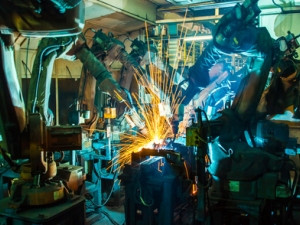
In the midst of debates and controversy around automation and its impact on employment, the latest report from McKinsey & Co has reported that humans will be needed to assist with new technologies. As automation becomes more common, there have been debates around the loss of jobs, but the report says that it will be mere 5% of occupations that will be at risk of being completely automated.
The recent report by McKinsey & Co titled: 'A future that works: automation, employment, and productivity' covers details about what is expected in the age of automation. The report was part of McKinsey Global Institute's overall research on the impact of technology on business and society, and specifically their ongoing research programme on the future of work and the potential impacts on the global economy of data and analytics, automation, robotics and artificial intelligence.
With computers being able to perform a range of routine physical tasks more efficiently and less costly than humans, their research has found that machines are increasingly able to accomplish cognitive capabilities. Activities that used to be considered difficult to automatic like making tactical judgements, sensing emotion or driving, are slowly becoming an automated reality.
Automation is said to have the ability to stir up productivity at both business and personal level and boost entire economies. From a microeconomic perspective, automation is said to have a potential to offer a competitive advantage by offering higher quality and decreasing downtime. The report estimates that automation could raise productivity growth globally by 0.8% to 1.4% annually from a macroeconomic level.
Analysing individual activities in the workforce by looking at current technologies, the report states that fewer than 5% of occupations today are fully automated and almost all other occupations have partial automation. "We estimate that about half of all the activities people are paid to do in the world's workforce could potentially be automated by adapting currently demonstrated technologies."
The pace and extent of automation will, therefore, vary with different occupations and activities. Many workers are expected to operate alongside new technologies; this is especially expected in manufacturing and retail trade, data collection and processing occupations. It is reported that many occupations will be based on skills bias which will raise the productivity of high-skilled workers. Automation will then reduce the need for lower skill and routine-intensive occupations. Other automation is said to only partially affect middle-skill workers. It is expected however that humans will be required to work alongside most automated activities.
Another report from Oracle titled 'Can Virtual Experiences Replace Reality?' has stated that 80% of brands in customer relations will use chatbots for customer interactions by 2020. According to the report, chatbots, which are automated responses to customer-related issues, are expected to deal with less complex issues while human interaction will be needed for more sophisticated relations.
"By 2020, a large percentage of brands will have incorporated artificial intelligence and virtual reality into their marketing, sales and service so that customers can move down the sales funnel themselves by interacting with the business on their own terms."
Share